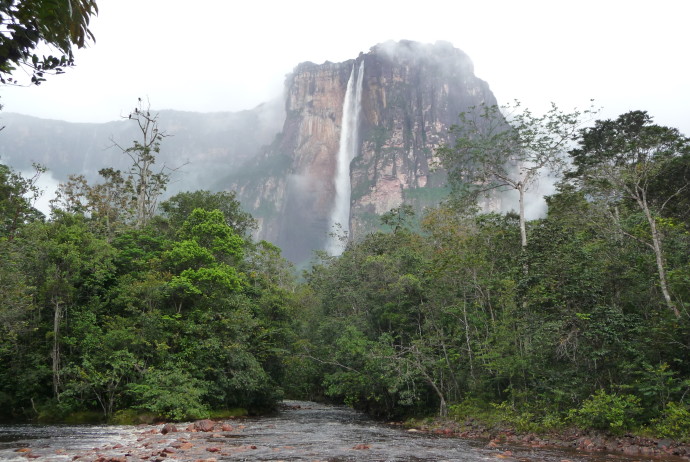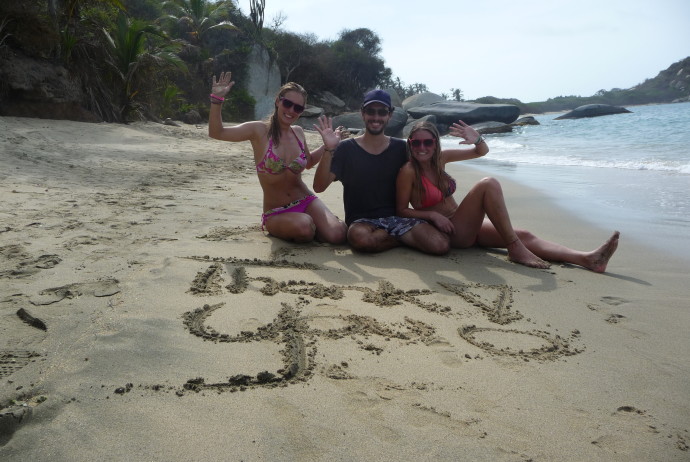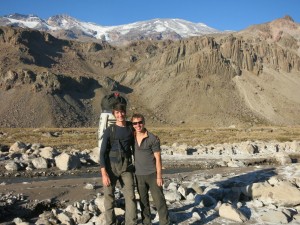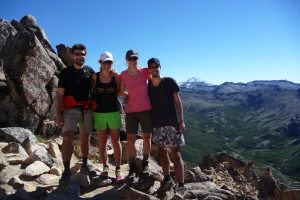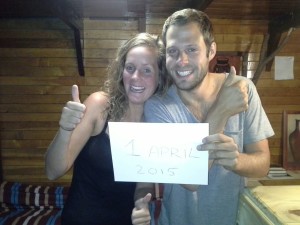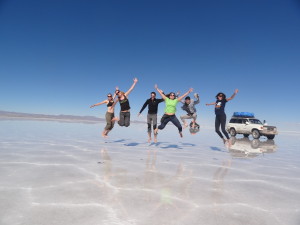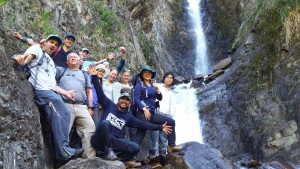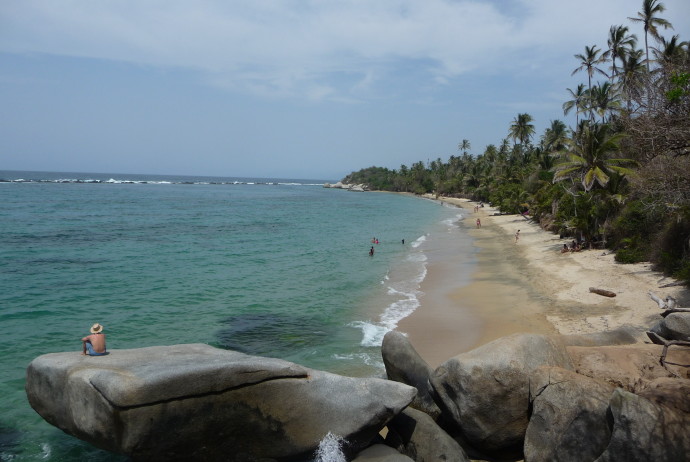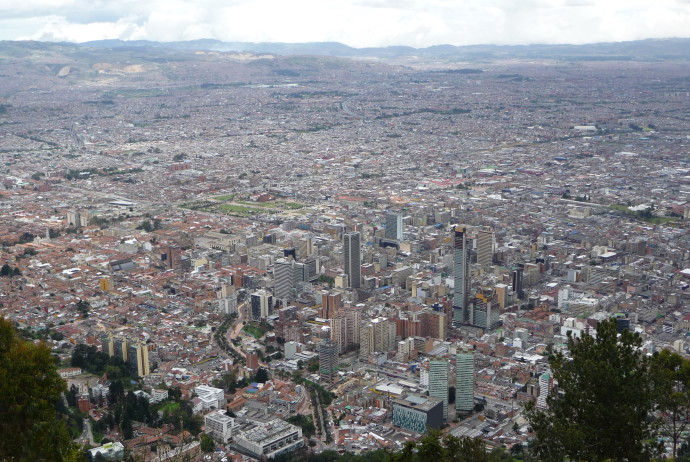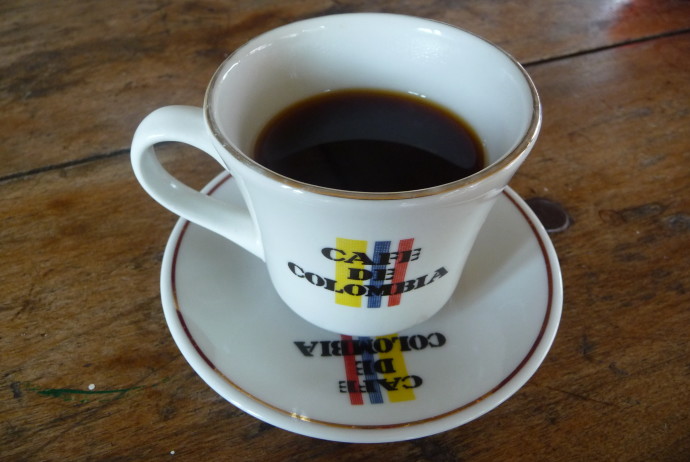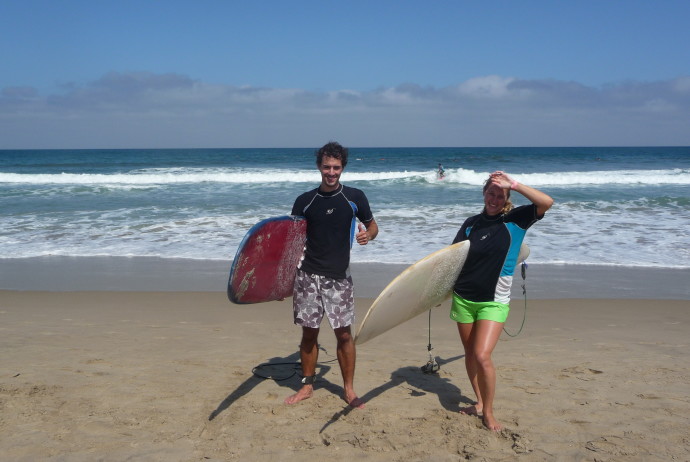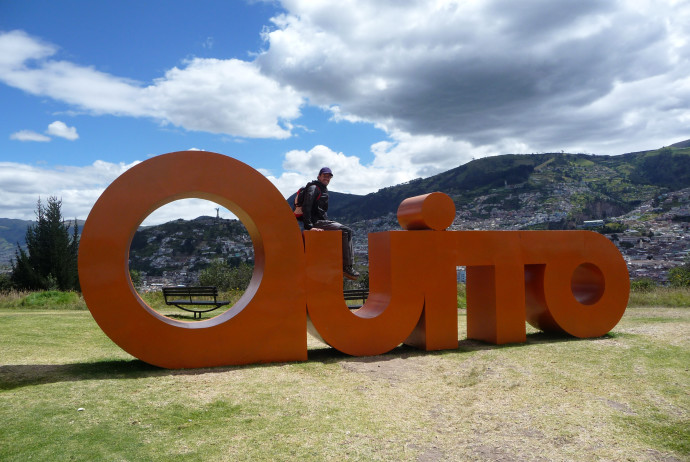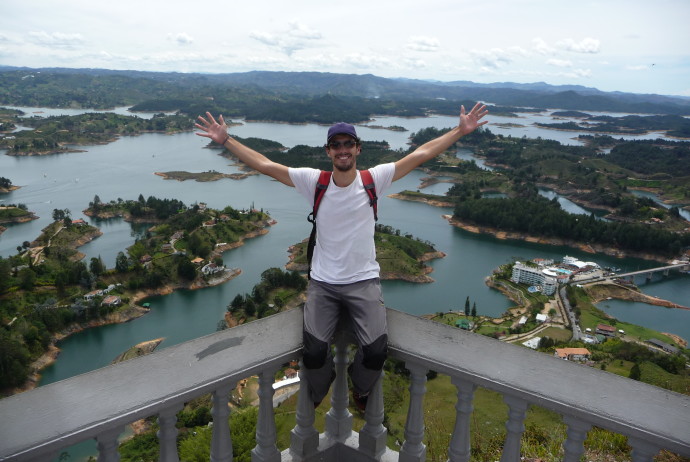One thing is for sure: Venezuela is the ultimate antonym to boredom! Even before we embarked on our adventure to visit Venezuela, we already expected that everything that may happen there would be too much to tell about in a regular post, so we decided to keep a detailed diary of our days there. And trust us, even though we were only doing it pinpoint style, it took us quite some time every day to write down (almost) everything that had occurred. Our primary aim in Venezuela was to go see the Angel Falls, to which, according to our research, it was quite a journey to get to. As we did not know how much time it would eventually take, we had decided to just go with whatever would happen and if there was time left in the end, we would go see some of the marvelous beaches everyone that has been there still seems to dream about.
So here we go, due to Venezuela being so special, here comes our special edition blog entry on Venezuela.
Day 1. The adventure begins.
As already said, the first and only planned stop in Venezuela were the mighty Angel Falls, the highest water falls in the world that crash down from 979 m of height. However, let us tell you, the way there is quite an adventurous journey! It started with our bus having to stop numerous times while the driver and his assistant tried to fix something – what it was exactly we never found out but they obviously eventually must had given up on trying because at some point we were told to get out and hop on another bus that came to rescue us. The closer we got to the border, the more turquoise the ocean got and the more small stands appeared on the side of the road, all selling Venezuelan gasoline in plastic bottles. Eventually the bus dropped us off in the Colombian border town of Maicao where we, for the first time then, were confronted with the typical smell of Venezuela: gasoline. Gasoline by the way, sell for 0,02 $/l (0,08 $/Gallon) and is thus often cheaper than water. Right after our arrival the first mission in Maicao was to exchange some of our money to Venezuelan Bolívars in order to buy tickets for a “taxi colectivo”. That is a taxi shared by various passengers not knowing each other but wanting to go to the same place which should take us over the border and eventually to Maracaibo, Venezuela’s second biggest city which is also a super important one for the oil trade.
Now money is a very interesting topic in Venezuela. Due to the surging inflation and instability, nobody trusts the Bolívar (which is the local currency) anymore and therefore, everybody who can is trying to have it exchanged for any other currency (preferably US Dollars). Thus, despite that officially 6,5 Venezuelan Bolívars trade for 1 $, 1 $ actually sold for up to 600 Bolívars on the black market at that time. These circumstances leave everybody arriving with US Dollars in Venezuela quite wealthy. Nevertheless, the challenge to find somebody trustworthy to trade in US Dollars is not always an easy one and is even aggravated by the fact that counting the stacks of Bolívars one gets for a few dollars is nearly impossible if one is not as practiced in the art of speed counting of money like most Venezuelans seem to be. But back to our story: So after having had successfully acquired some Bolívars we were ready to board one of the colectivos which were already waiting for passengers just outside the bus terminal. These vehicles again are worth a bit more of an explanation. Most of them look like the big old limousine style US Cars from the 60s, run on about 20+ l of gasoline/ 100 km (which due to the cheap gasoline price is no problem at all – disregarding Nature in that case) and generally don’t appear like they are able to handle another 20 kms without a breakdown, leave alone the 130 km to Maracaibo. Nevertheless, our driver took us safely across the border and to Maracaibo’s bus terminal. On the way there we not only passed multiple check points where heavily armed soldiers equipped with machine guns wanted to see our passports but also made a new friend: a Venezuelan dentist who told us a lot about the country and its current situation. Furthermore he must have realized somewhere along the way that we were quite clueless on how to proceed from the terminal on. Thus, he stayed and helped us until we were all set up with a big bag full of Bolívars (which we received for 80 $ in the back of a pizzeria – they were so many that they were handed to us in a big plastic bag) and night bus tickets to Caracas.
Distance to Angel Falls:
At the start of day: 1.408 km
At the end of the day: 1.133 km
Day 2. Exploring the various means of transportation in Venezuela…
Our night on the bus was actually not so bad. Despite that the temperature in the bus was set at so low that it very much resembled the one on the North Pole and that the air con leaked in some spots so that a few passengers got an involuntary shower during the night, the ride itself was definitely not under the top 5 of our worst bus rides in South America. When we arrived at the bus terminal we were again assisted by an incredibly friendly local who made sure we got a save taxi ride straight to the airport where we were hoping to get some tickets for a flight to Puerto Ortaz, one of the two cities most organized trips to the Angel Falls start (the other one is Ciudad Bolívar, but there were no flights from Caracas going there). Upon arrival a guy from the ‘tourist information’ informed us that he could help us to get tickets despite that all flights were sold out. His condition: we just would have to pay a bit more to some of his friends who “luckily” were working for one of the airlines. However, after having waited for hours for that guy to arrange tickets without ever getting them, we eventually went to stand in line at one of the airline counters. That was where we met a girl who also did not have a ticket but who was a genius at making the airline employees selling the tickets understand that it was crucially important that she got on the flight (she had a story made up that she was an artist who had to perform that night in Puerto Ortaz). Moreover she also told them how some people had tried to sell us tickets for double the regular price and that got them so upset and feeling sorry for us that they not only sold us tickets for the regular price (which was the equivalent of 4,50 $/person!) but also had the manager come to apologize to us and upgrade us for free to first class. Thus, we arrived at Puerto Ortaz that evening and because we thought it would be easier to organize a trip from Ciudad Bolívar, we took a cap to go there (it was just one hour more in a cap ride that cost us 3 $). We got there at 8 pm so all the tour operator offices selling tours to the Angel Falls were already closed but when we checked in at a hotel, the host called one of his friends who luckily was a tour operator himself as well and who could set us up with a tour that night still – he just came by for a beer and so things got all settled smoothly: We would be able to start the rest of the journey to the Angel Falls at 6:30 am the next morning.
Distance to Angel Falls:
At the start of day: 696 km
At the end of the day: 264 km
Day 3. The Angel Falls – FINALLY!
The next morning we got picked up at 6:30 am by a cab which took us back to Puerto Ortaz (Yes, back because that day there were no flights available anymore out of Ciudad Bolívar), from where we took a flight to Canaima, a city in the middle of the Amazon rainforest, which is accessible by plane only. Our plane, like most ones going there, had only space for 18 people and thus, was up to then the smallest one we had ever boarded. Little did we know that this fact would change again soon – but more about that later. The airport of Canaima is minuscule! From there a driver took us to a lodge in which we were told however, that we would not be staying that night as planned, but were soon to leave to go straight to the Angel Falls were we would spend the night. However, we were already kind of used to sudden changes of plans, so that was all good for us. And so the next stage of our journey started: the boat part. We had to go up the Río Carrao in a canoe style boat for about 70 km which took us approximately 4 hours, passing rainforests that looked exactly like we had always imagined the Amazon rainforest: wild, stunningly beautiful, untouched – and rainy. While on the way, we only stopped once to get out to hike one stretch of the way where the rapids were too dangerous to pass through with the boat. Also, once, we were going down the river for a while again because our motor had some issues. Luckily, however, it started working again soon and so we could continue upstream again until we finally could see the mighty falls – still from the far, but the moment after so long making our way there was very special and deeply impressive. We got out of the boat, already dripping wet from the rain and the river splashes and started the final part of the trip to the falls: the one hour hike to the viewpoint. It was an easy hike on a well beaten track through beautiful jungle but we were so excited that time just did not pass. Eventually we could hear the falls louder and louder and finally we arrived at the viewpoint. Due to the season, the falls were impressively huge. The rain and the fog made the atmosphere spooky and also quite authentic for a waterfall in the middle of the RAINforest. However, the pictures did not capture that special moment too well. You really have to do this whole journey to understand our contentment and happiness when we had finally arrived. Quite exhausted from the last days we eventually made it back down. Lucky for us, the ride to our camp for the night was just a very short one.
Distance to Angel Falls:
At the start of day: 266 km
At the end of the day: 0
Day 4. Some more waterfalls…
As we had splurged a bit and had booked the “VIP” package we slept in hammocks in the closest camp to the waterfalls and could see them right when waking up the next morning. Sleeping in the hammocks worked out really well too: it was not too hot and there were hardly any mosquitoes (they must have all stayed up at the falls, waiting for the next day’s visitors), so we slept like babies after having finally achieved our biggest mission in Venezuela – and that in record time! We had expected that this journey would take wayyyy longer but as we were so quick, we now had plenty of time to see some more of Venezuela.
But first we had to go back all the way down the river, all 70 km to our lodge which due to our VIP package booking was amazingly wonderful – apart from all the mosquitoes that attacked us every time we entered the bathroom (for some reason they had not build a proper roof on that one, so they could get in – and as we obviously must have tasted great, they had decided to stay there and hunt us down). Anyways, in the afternoon we went for another excursion to the Canaima Lagoon Waterfalls, consisting of Salto Ucaima, Salto Golondrina, Salto Wadaima and Salto Hacha. We took a boat across the lake collecting the water of the foot of the falls, right in our lodges backyard. It took us only few minutes to get to the other side of the lake and from there we hiked for half an hour until we got to the Sapito Fall. This fall is special because it’s possible to walk right through it, or at least under it – and that is amazing because you can feel and hear and experience the immense power of these thousands of liters of water coming down every second. Sadly we did not have a GoPro or waterproof camera to capture the hike underneath it but we can tell you, it was spectacular.
Day 5. From the jungle to the beach.
The next day was a big transit day. We had to get from the jungle to the coast. The journey started in the morning with going to the “airport” (this we put in quotation marks here because it is the most extraordinary airport ever: there is just one desk where you hand in your passport so they note down your name and then you wait till they call you) in Canaima where we waited to be assigned to a plane. We expected to be going back with the same machine as we had came two days before but then they called us and walked us to the tiniest Cessna on the field: only 6 people fitted in that car sized plane and one of them was the pilot! So we boarded it and after nearly peeing my pants (this is speaking for Nicky, I think Patrick was a bit braver) I could actually enjoy the flight which turned into the best one I have experienced so far in all my life: the views over the rainforest were simply amazing! After a bit more than an hour we safely landed in Ciudad Bolívar, thanked our pilot and went off to see the city center for a few hours. It is a really beautiful city on the shores of the Orinoco river with a picturesque, colorful old town area. Due to Venezuela’s difficult situation at the moment, however, it was a sad city to visit: all bakeries we passed featured signs on the window saying: “no hay pan” which translates to “there’s no bread” and copy shops had signs out front saying that there was no paper available. Also, there are hardly any restaurants open anymore these days. These are just a few examples – it is really hard to paint an appropriate image with words of how it is to be there. Also, it was kind of scary to hang out there as our travel agent who had arranged our Angel Falls tour had advised us not to walk either too far right or left of the center… So in the end we were happy when the day was over and we could eventually get on our night bus to Valencia – our LAST night bus for this South America trip! Buying the tickets for it, however, had been quite a challenge too as it is hard to get bus tickets anywhere in Venezuela at the moment. There is a bus ticket “mafia” which buys all the available tickets in the morning and sells them for double or triple the price. Anyways, we got some and thus, in the morning we arrived in Valencia. When we got off the bus, we had to again find someone to trade us some US Dollars for Bolívars. This time we found somebody to do it in the back of a shoe store at the terminal and it worked out perfectly again. Thus we left with another big plastic bag full of Bolívars and were ready to get on the next bus to Chichiriviche, the little city from where we would be able to discover some of the islands, called Cayos, not far out in the ocean. When we got there, we first had to find a hotel, however. So we walked around for a bit, looking for one but were not so successful in the beginning: most hotels were quite run down and not very inviting. Then, however, we ran into a lady who was with three little kids and asked us, if we would like to rent a room in the apartment she was renting with her family. As at that point we were substantially exhausted from the last days, the sleepless night in the bus, the running around in the humid heat and not having eaten much in quite a while, that offer sounded wonderful, so we naively went with her. The cab we shared took us out of town to a resort where all Venezuelans with kids that still have money most likely spend their vacations. It was like a small gated city with lots of restaurants, shops, pools with water slides and waves and other entertainment facilities. As we felt save and good there, we decided to take the lady’s offer and rent that spare room in her apartment.
Day 6. Caribbean islands and a bad surprise.
The next day it was time to discover some of the islands around Chichiriviche. The islands there are called “cayos” like the Spanish version of the “keys” in Florida. Our first excursion was a tour of the bay where we went to see a few different ones of the close by cayos, an area where oysters are harvested and a ship wreck. After that tour we could relax on the beach of Cayo Sal while enjoying the view of the turquoise and crystal clear Caribbean Sea. When we got back to the mainland we had some super delicious seafood in one of the restaurants right at the beach before facing the chore of the day: finding someone to exchange us some more dollars again. The thing was, that we never wanted to exchange too many at a time because it was quite difficult to carry around so many bills, and also, because we never knew if we could really trust the person exchanging them for us. But the problem was, that this way, we constantly ran out of money and had to get some more somehow. So that day, we were not lucky and were only told to come back the following day. We spent the evening at the resort, hanging out at the wave pool, being the attraction of the local teens of whom lots had never spoken to foreigners before. When we got back to our room there was a bad surprise waiting for us: somebody had stolen some of our money and half of our dollars were gone. We thought we would probably never find out who had taken them – but oh so wrong we were.
Day 7. The most beautiful cayo of all and how to exchange money in Chichiriviche.
That day we went to “Cayo Sombrero” which is supposedly the most beautiful of all the cayos and we can also confirm this. It is a bit farther out and the water there is just perfectly clear. Also, there are less people than on the cayos closer to the shore. We had a super relaxed day there, met some really nice people and when we eventually went back, we rounded off the great day by being able to allocate someone who wanted some of our remaining dollars in exchange for some Bolívars. In fact, we learned that there were three people in town that always exchange dollars: a guy called “The Arab” whom we never got to meet, a lady whose name we forgot and Senor Amalí who also owns a liquor store of that name. We went with the last one who looked like a mafia boss out of a gangster movie. Nevertheless, he was great to do “business” with and furthermore gave us great advise on which rum brands where the best in Venezuela. Oh, and one more thing we succeeded that day: we found bread! Freshly baked bread! As flour is rarely to be encountered in Venezuela at the moment, that was not an everyday thing anymore but something really special. We also went to get some groceries in the supermarket which due to our exchange rate leverage were amazingly cheap for us. We will add a price list at the end of this blog post for examples.
Day 8. The best day and the thief’s outing.
On the morning of this day our hostess – Ana – told us that her house in Caracas had been robbed, so she would have to leave to see if things were ok. She surprisingly also told us to stay as planned until the next day and said we would just have to return the keys at the reception upon leaving. Truth be told, we were naive enough to swallow that story and happily went off to spend another day touring around various cayos and relaxing on the beach of marvelous Cayo Sombrero while sipping on some spirit coolers, just like all the Venezuelans around us had taught us to do. When we got back to the hotel and entered our room we did not believe our eyes when we just found an empty apartment with none of our belongings in sight. Luckily, however, two of the girls of the staff there came to tell us soon after, that they had our luggage safe, that only they had taken it out because the lady’s rent was over that day and that thus, we had to move out. When we had verified that our luggage, including our passports and electronics, where still there, we cracked up in laughs about how naive we had been to trust that woman. The only things that had gone missing was the rest of the money that had been in the (locked) luggage and UNDERWEAR (three bras and a few panties – no kidding! But everybody obviously regards different things as valuable…). We had to tell the manager what had happened before we were free again to go. Now, there we were, stranded at night in Chichiriviche with no hotel once again. Luckily, some girls of the staff were super sweet and organized motor taxis to come pick us up and drive us around (with our big bags shouldered) in search for a new place to stay. However, that was a difficult journey as exactly that day was the start of a long weekend and the whole town was pretty much booked out. Eventually though, we were successful and could finally get some more drinks and rest to recover from the recent happenings. At least though we had found out who had been the thief in the first place… And, we still had had the best day of our Venezuelan adventure that day – no stupid thief could ruin that.
Day 9 & 10: The way back to Colombia.
The last two days in Venezuela were again transit days as we had to make our way back to Santa Marta, Colombia. Thus, we spent them in hot and crowded buses and scary looking cabs – but that was OK: these would be the last two transit days of the whole South America trip and by now we had so many experiences of the last days, weeks and months to digest that we could happily sit in buses without even reading a book or listening to music but just sitting there, relaxing, lost in memories. We had perfectioned the art of being able to do nothing for hours. So in the evening of the next day we eventually arrived back in Santa Marta, having survived Venezuela with only minor setbacks but with loads and loads of unforgettable and awesome memories.
How much things cost in Venezuela
In the supermarket… 2 bottles of drinking yogurt, a package of “Dulce de Leche”, a Colgate tooth paste and an Eskimo Magnum Mandel – all for only 0,80 $!
In the liquor store… a bottle of the better brand of vodka they had for 1,80 $ plus 4x 1,5 l of water for all together 0,35 $.
In the fruit store… 3 bags of fruit containing mangos, pineapples and bananas for 1,10 $.
In the restaurant… spaghetti with seafood and fish filet with sea food sauce, 2 beers and 2 sodas for 4 $.
All calculating with an exchange rate of 1 $:550 Bolívars. This was our average rate we exchanged for in July 2015 which was continuously increasing. The current black market exchange rate can be retrieved from this website.
If this convinced you to go, please check the current situation first.
